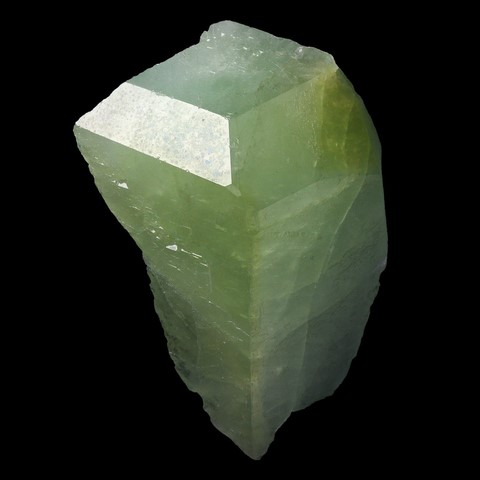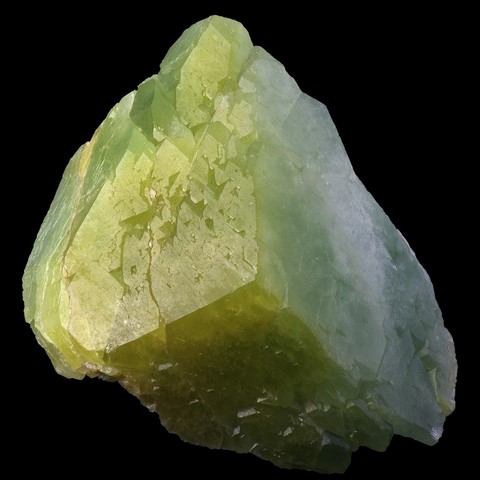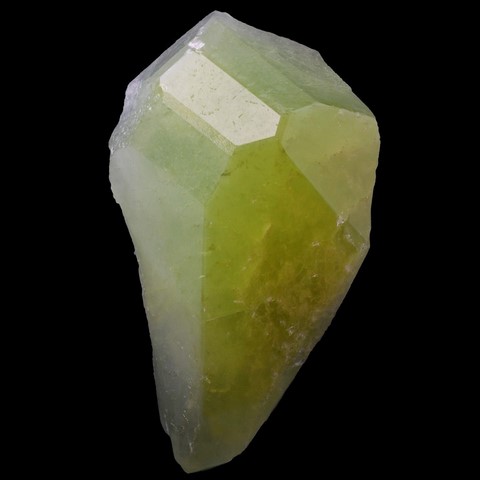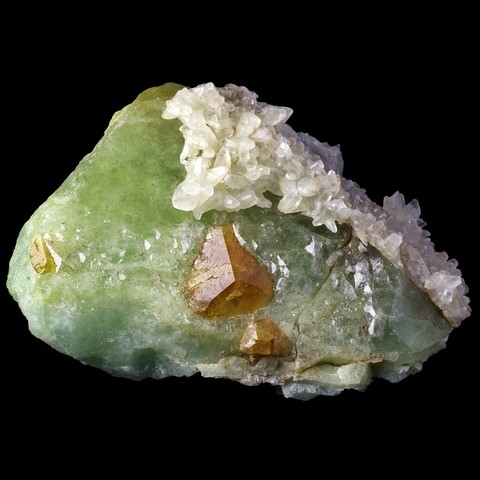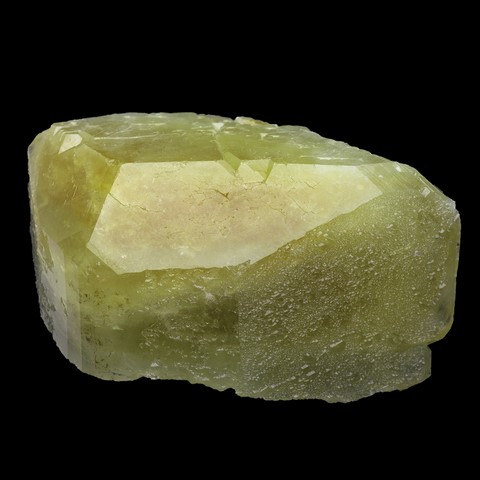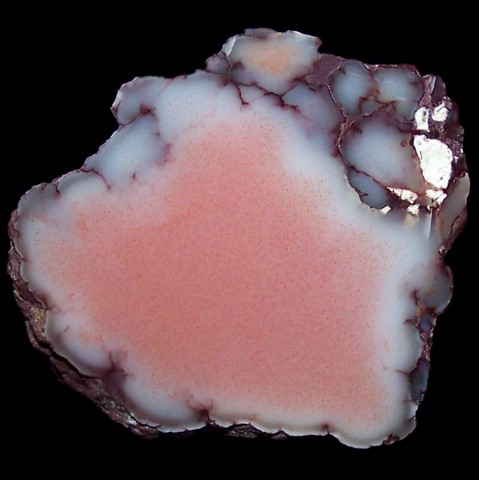 Datolite - Encyclopedia
Datolite - Encyclopedia
Class : Silicates
Subclass : Nesosilicates
Crystal system : Monoclinic
Chemistry : CaBSiO4(OH)
Rarity : Uncommon
Datolite is a secondary boron silicate of hydrothermal origin. It is a mineral that owes its name to the Greek dateisthai (divide) and lithos (stone) because subjected to a shock the aggregates are easily fragmented. It is generally formed like zeolites and prehnite, in the cavities of basic magmatic rocks, but also as a hydrothermal alteration product in various metal deposits in basic context as well as in skarns and limestones subjected to the action of B-rich fluids. Datolite in developed and aesthetic crystals is rare and usually occurs as tabular crystals ; the mineral is more common in globular, columnar or radiate masses, of porcelain aspect. From vitreous to resinous, it is colorless or pale yellow-green, sometimes white or greyish, pale blue or pale violet. Because of its rarity in aesthetic crystallizations, it is a mineral little known by mineral collectors, it is also a mineral cut for jewelry, especially in cabochons.
Datolite in the World
Datolite in France
In France, datolite is reported at Raon-l'Étape in the Vosges Department in the old quarry of the Pomme de Pin, Côte Saint-Dié, Col of Sainte-Marie-aux-Mines or Wisembach. According to the geologist Daubrée, datolite frequently carpets the druses of kersantites, very frequent in this granitogneissic massif.
Twinning and special crystallizations
Fakes and scams
No fake known for this species.
Hardness : 5 to 5.5
Density : 2.6 to 3
Fracture : Irregular to conchoidal
Streak : White
TP : Translucent to transparent
IR : 1.626 to 1.654
Birefringence : 0.044
Optical character : Biaxial -
Pleochroism : Weak
Fluorescence : None
Solubility : Acids
Magnetism : None
Radioactivity : None

